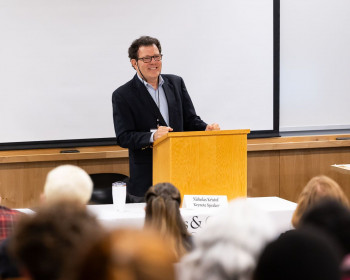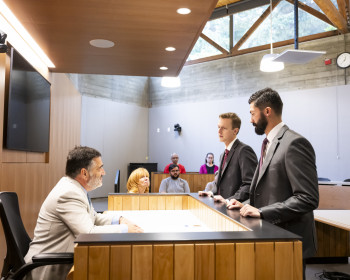Lewis & Clark Law Review continues to jump in Washington & Lee Journal rankings
Open gallery

Lewis & Clark Law Review (LCLR) saw its second year of gains in the Washington and Lee Law Journal Rankings for 2020, jumping to 46, while the all journal ranking rose to 54. In 2018, among flagship journals, LCLR ranked 61, and among all journals, LCLR ranked 84.
Released on June 30, 2021, the 2020 rankings provide citation data and calculate ranks of the top 400 U.S.-published law journals out of the existing 1554 journals nationwide. Washington & Lee rankings are based on the number of times a journal is cited on Westlaw over the last five years, compiling a raw score to establish the rankings. According to Washington & Lee, the Law Journal Rankings use Boolean searches in Westlaw to determine the number of citing documents – court cases from all U.S. jurisdictions and law review/journal articles – for each law journal. Counted citing documents are those which cite journal volumes published in the preceding five years. These limits help to prevent a bias in favor of long-published journals and to generate rankings based on citations to current scholarship.
Professor John Parry shared how important these rankings are for Lewis & Clark as an institution and for the individual students themselves. “These rankings suggest the level of influence that a particular law review enjoys. The journals with higher rankings are the ones that consistently publish important or useful scholarship as the authors prefer to publish in higher ranking journals, achieving a top 50 ranking will help LCLR continue to publish important and interesting work,” said Parry.
Having to transition to a remote style over the 2020 school year, preceding Editor-in-Chief Connor McDermottnotes the struggles LCLR overcame in order to achieve these high rankings. “It was the middle of the pandemic, and I had to figure out how to transition the journal into a remote institution. My Executive Editors, Gracey Nagle and Alexandra Choi Giza, were absolutely instrumental in pushing the journal forward to a better place. Their hard work combined with our members’ resilience turned a very bad year into an opportunity for growth and change at LCLR. [Our Submissions Editor Colin Bradshaw] picked fantastic, thought-provoking, and timely articles for us to work with, most of which were getting cited to almost as soon as they got published,” McDermott shared. “A huge step forward was actively curating material for publication. Colin and I also put together our Spring Symposium on race and criminal justice reform, which generated a lot of buzz. In short, I think that the biggest things that boosted our rankings were that we were blessed with an amazing team of knock-out editors, and we hosted a tragically timely Symposium.”
In the future, LCLR Rising Editor-in-Chief Victoria Bejarano Muirhead is determined to continue this legacy. “I am really excited about the articles we have selected for publication in the coming academic year. I hope to build on the success of previous law review boards by continuing to print innovative, thought-provoking pieces, and through supporting the authors who entrust their work to us for editing and publication.”
Law Communications is located in room 304 of Legal Research Center (LRC) on the law Campus.
MSC: 51
email jasbury@lclark.edu
voice 503-768-6605
Cell: 626-676-7923
Assistant Dean,
Communications and External Relations, Law School
Judy Asbury
Law Communications
Lewis & Clark Law School
10101 S. Terwilliger Boulevard MSC 51
Portland OR 97219

